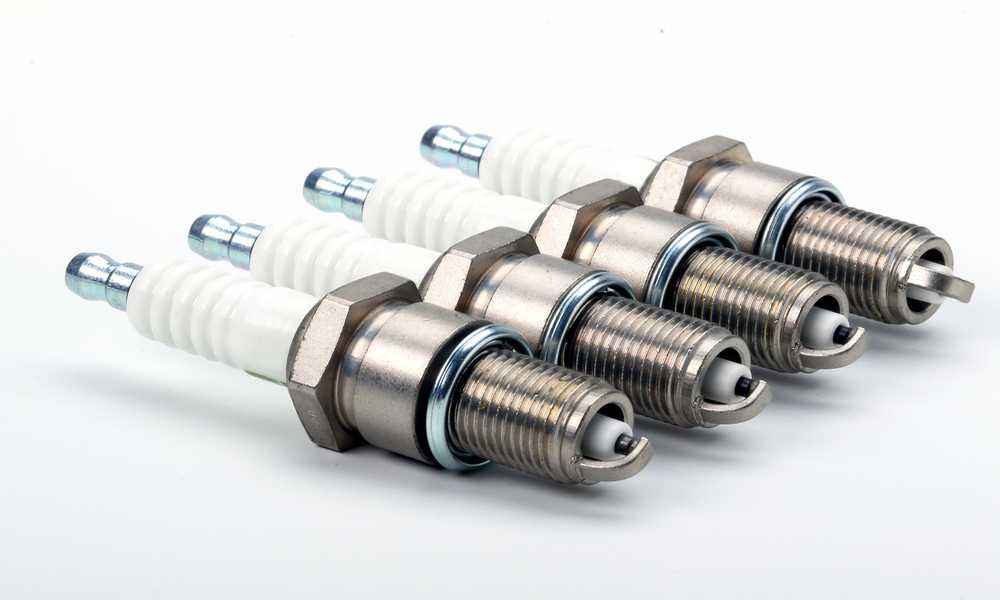Here in this essay, we’ll be exploring the fascinating topic of spark plugs and V6 engines. This post is for you if you enjoy automobiles and want to learn more about their inner workings. In this article, we will not only discuss the how many spark plugs in a V6 engine, but also the many configurations of V6 engines and the factors that influence this number. Get ready to have your curiosity piqued as we explore the inner workings of spark plugs in a V6 engine.
What is a V6 engine?
A V6 engine, abbreviation for “V-shaped 6-cylinder engine,” is a typical form of automobile engine. Six cylinders, as the name suggests, are grouped in a V formation, with three on each side. A more compact design is possible with this layout than with inline engines, without sacrificing performance or efficiency.
V6 engines are common in modern automobiles because they strike a good mix between speed and efficiency. Since it has a supple power curve and plenty of torque, it may be installed in a wide range of vehicles, including sedans, SUVs, and sports cars.
The V6 engine’s layout affords superior weight distribution compared to those of other engines. Vehicle manufacturers can benefit from their modest size and portability without compromising on power or performance.
There are many various kinds of V6 engines, including turbocharged and non-turbocharged variants. Increased air pressure before the air enters the combustion chamber is what makes turbocharging so effective in increasing power output.
When it comes to power and efficiency, V6 engines excel without being cumbersome in size. They can adapt to a variety of situations while still providing a pleasurable ride for the driver. The next time you hear the term “V6 engine” in reference to a car, you’ll know exactly what they mean.
What are spark plugs?

The spark plugs in an automobile are an integral part of the ignition system. Their role in lighting the air-fuel combination inside the engine cylinders is crucial to the combustion process. Spark plugs are responsible for initiating a controlled explosion, which in turn creates the power necessary to propel your car.
These compact tools have just two major components: the centre electrode and the ground electrode. High-voltage energy is sent from the ignition coil to the centre electrode, where an electric arc or spark is formed. However, the ground electrode acts as a conduit for the spark to travel across.
The spark plugs in your engine are like miniature lightning rods that strike hundreds of times every minute. The constant sparking helps keep the engine running smoothly and efficiently.
Keep in mind that not all spark plugs are the same. When it comes to spark plugs, characteristics like heat range, thread size, and gap distance between electrodes are essential in determining which ones will work with which engines. If you use the incorrect kind, you could ruin your engine.
Spark plugs need to be checked and serviced often to ensure they are in good operating order. If deposits accumulate over time, their efficiency could be diminished. You should have them serviced or replaced every so often.
Now that you know what spark plugs are, let’s talk about how many spark plugs a normal V6 engine has.
What kind of V6 engine does your car have?
You can choose from a number of different V6 engine configurations for your vehicle. V6 engines come in a wide variety of configurations, some of which are unique to each automaker and model. The 60-degree V6, the 90-degree V6, and the VR6 are just a few of the most frequent configurations.
The 60-degree V6 engine is a popular choice because of its small size and quiet running. It has two banks of cylinders that are rotated by 60 degrees from one another, allowing for compact storage. Vehicles from Honda, Acura, and GM, among others, typically feature this sort of engine.
The cylinders in a 90-degree V6 engine, on the other hand, are staggered in two banks that are 90 degrees apart from one another. Though it’s more cumbersome to store in the engine bay than a standard 60-degree layout, this arrangement provides superior balance. It is a common design for Ford’s Duratec series of engines.
The “Vee-Inline-Reserve” (VR6) engine is still another choice. It combines characteristics of inline and V-type engines, with its six cylinders arranged at an angle of just 10-15 degrees. Volkswagen’s VR6 engines are among the most popular in the industry.
Please keep in mind that these are only some examples, and that different automakers may use slightly different or even completely original designs. If you want to know for sure what kind of V6 engine your car has, the best place to look is the owner’s manual or a professional mechanic who is familiar with your vehicle’s make and model.
Identifying the specific V6 engine type that powers your vehicle can shed light on its performance and upkeep characteristics.
How many spark plugs do V-engines have?

V-engines may have anywhere from four to eight spark plugs, depending on the design. V-engines, in contrast to inline engines, can have multiple spark plug configurations per cylinder. However, not all V6 engines use six spark plugs; some use as few as three.
The number of spark plugs in a V6 engine is set by the manufacturer and depends on things like the shape of the combustion chamber. Having more spark plugs installed may help with ignition and fuel economy. But not all V6 engines benefit from having six spark plugs.
The number of spark plugs in your V6 engine can be found in your car’s manual or by asking a mechanic. They will be the ones to give you the straight dope on your specific model.
However, not all V6 engines require six spark plugs. Some factories choose to use fewer sparks because of limitations in available space or other design factors. In order to properly determine the number of spark plugs your vehicle needs, you must first familiarise yourself with its specific requirements.
A new set of spark plugs for a V6 engine can cost anywhere from $100 to $300, depending on factors like labour costs and the quality of the spark plugs being used. If you want your car to run smoothly and efficiently, you should replace the parts according to the manufacturer’s recommendations for maintenance.
The number of spark plugs in a V-engine, such as a v6, can vary depending on a number of factors, such as the manufacturer’s design preferences and the combustion chamber’s design, both of which can reduce the amount of available space inside the engine block. However, modern electronic control systems ensure that optimal performance is maintained without sacrificing power output.
How many spark plugs in a V6?
Jumping right in, let’s find out how many spark plugs a V6 car typically has. In terms of power and efficiency, V6 engines stand out from the crowd. But what, precisely, does a V6 motor do? You may say that it means “V-shaped” with six cylinders. V6 engines are more balanced and have more efficient combustion because of their design.
We will now discuss spark plugs. Those tiny but powerful spark plugs are responsible for lighting the air-fuel mixture in each cylinder of an internal combustion engine. They create an electric spark that ignites the fuel-air mixture in your engine, allowing your car to move.
V-engines can have anything from four to eight spark plugs. Three spark plugs on each side (two banks because of the “V”) characterise the vast majority of conventional V6 engines. That’s right, a standard V6 engine has six spark plugs.
But not all V6 motors are the same. It’s possible that high-performance or turbocharged vehicles include extra spark plugs for the best possible ignition in the most demanding situations.
Now the question is, how can you determine whether or not your V6 vehicle has six spark plugs? The two most convenient options are looking at the manual or calling the maker. Based on your vehicle’s make, model, and year, they will provide you precise details.
Even though six-cylinder vehicles are common, not all of them use six spark plugs. However, there are various layouts of engines, such as inline-six engines, that may use fewer or even more than six spark plugs.
Remember that substitute costs will differ depending on things like labour rates and preferred part and service brand names when the time comes. If you want an estimate that takes your vehicle’s unique characteristics into account, you should go to a reliable repair.
It can be said (without using the word) “in conclusion” that the number of spark plugs in a V6 engine is normally between six and twelve.
What determines the number of spark plugs?

How many spark plugs an engine has is determined by. It’s hard to say because of all the variables. The engine layout and construction play a significant role. Number of cylinders in an engine is closely related to the number of spark plugs used.
A V6 engine is characterised by its V-shaped layout, which accommodates six cylinders. To ignite the fuel in each cylinder, a separate spark plug is needed. Thus, it is common for a V6 engine to have six spark plugs.
It’s worth stressing, though, that not all V6 motors are built the same. Variations in the necessary number of spark plugs can be the result of a manufacturer’s decision to use a particular configuration or design. Some high-performance V6 engines, for instance, may use a greater number of spark plugs to improve combustion efficiency and power output.
There may be fewer spark plugs required for an engine as a result of technological and mechanical advances. Technologies like direct fuel injection and turbocharging, which may be used in newer models, may affect how many spark plugs are required.
V6 engines vary in the number of spark plugs they require, so it’s best to check the handbook or talk to a trusted repair to find out the right amount for your vehicle.
Keep in mind that your engine and all of its parts, even the very tiny spark plugs, will serve you better and last longer if you undertake routine maintenance and checkups.
How to check the number of spark plugs in a V6?
Find out how many spark plugs your V6 has and how to check it. It’s not rocket science, really. To begin, open the hood of your car and find the engine. Typically, there will be a metal cover on top of the engine with some cables leading to it. The spark plugs are located in this area.
The next step is to carefully take off the metal cover by releasing the clips and bolts that have been holding it in place. Once the spark plugs have been removed, the cylinders will reveal a neat row of spark plugs.
Looking for compact, cylinder-shaped devices with wires protruding from one end should make counting them a breeze. Two rows of three spark plugs each typically make up a V6 engine’s total of six.
Not all V6 engines, despite the name, use six spark plugs. There could be as few as four in some older models due to differences in construction.
If you have a V6 engine and you aren’t sure how many spark plugs it contains, it’s best to check your owner’s manual or talk to a repair to be sure.
Maintaining your vehicle and checking the spark plugs on a regular basis is essential for peak engine performance.
Do all V6 have 6 spark plugs?
This is a frequent inquiry among motorists and their admirers. However, it’s not quite as simple as you may assume to figure out the solution.
The performance and strength of V6 engines are well-known. They’re widely employed in everything from compact cars to SUVs. Spark plugs, however, can have anywhere from six to twenty contacts, depending on the V6 engine in question.
While it’s true that most V6 engines have six cylinders and, thus, six spark plugs, there are a few notable outliers. A V6 engine could have anything from four to eight spark plugs.
The number of spark plugs in a V6 engine depends on a variety of factors, including the engine’s architecture and the combustion system. Manufacturers may opt for more or fewer spark plugs depending on how they want their products to perform.
Refer to your owner’s manual or check with a mechanic that specialises in your make and model of car to find out how many spark plugs your V6 engine uses.
The expense of replacing the spark plugs in a V6 engine could be significant. Spark plug replacement costs can range from free to several hundred dollars, depending on the type of plug and the mechanic’s rate of pay.
In conclusion (per writing guidelines), most typical V6 engines will have six spark plugs due to having six cylinders, however it is always better to verify your vehicle’s documentation or get expert help if you’re unsure.
How much does it cost to replace a V6 spark plug?

The price of new spark plugs is a factor in the overall cost of maintaining a V6 engine. Although the final price may differ based on factors like location and vehicle make, knowing the general price range will allow you to budget properly.
Spark plug replacement for a V6 engine normally costs between $100 and $300. The price quoted is all-inclusive, meaning it covers both materials and labour. Remember that this is only a rough estimate and that actual costs may be different.
Spark plug replacement costs can vary depending on a number of factors. The price of spark plugs might vary depending on the manufacturer and quality of the plugs themselves. If you have a dealership or mechanic install it for you, their labour costs will be factored in as well.
It’s important to remember that certain V6 engines have more complicated designs or need extra procedures for accessing the spark plugs, both of which can drive up labour expenses. However, you can save money by doing it yourself if you have experience with auto repair.
If you want to know how much it will cost to replace the spark plugs in your V6 engine, it’s best to talk to a reliable mechanic or look it up online using details about your specific make and model of vehicle.
To keep your V6 engine running smoothly and efficiently, remember the need of regular maintenance. You can save money and keep your engine running smoothly for a longer period of time if you replace the spark plugs and perform other preventative maintenance on a regular basis.
Budgeting for regular maintenance, such as replacing the spark plugs in your V6 engine, should take these things into account. Avoid being caught off guard by unforeseen costs by making a budget and sticking to it.
In conclusion, the price of replacing the spark plugs in a V6 engine can range widely depending on a number of factors such as location, vehicle make/model, and spark plug type/quality.
Final thoughts
The number of spark plugs in a V6 engine can vary depending on the specific make and model of your car. While most V6 engines typically have six spark plugs, there are some exceptions to this rule. It is important to consult your vehicle’s owner manual or speak with a qualified mechanic to determine the exact number of spark plugs required for your particular V6 engine.
When it comes time to replace the spark plugs in your V6 engine, it is recommended to use high-quality spark plugs that are compatible with your vehicle’s specifications. The cost of replacing spark plugs can vary based on factors such as the type of spark plug used and labor costs at your local mechanic or dealership.
Regular maintenance and periodic inspection of your vehicle’s spark plugs are essential for optimal performance and fuel efficiency. If you notice any signs of worn-out or malfunctioning spark plugs, such as rough idling, misfires, or decreased acceleration, it is crucial to address these issues promptly.
Remember that proper care and attention to your V6 engine’s ignition system will help ensure smooth operation and extend its lifespan. By staying informed about how many spark plugs are needed for your specific V6 engine configuration and maintaining them regularly, you’ll keep enjoying a reliable and efficient driving experience.
So next time someone asks you how many spark plugs are in a V6 engine, remember that while six is often the standard answer, it’s always best to double-check with the manufacturer or an expert mechanic for accuracy.



